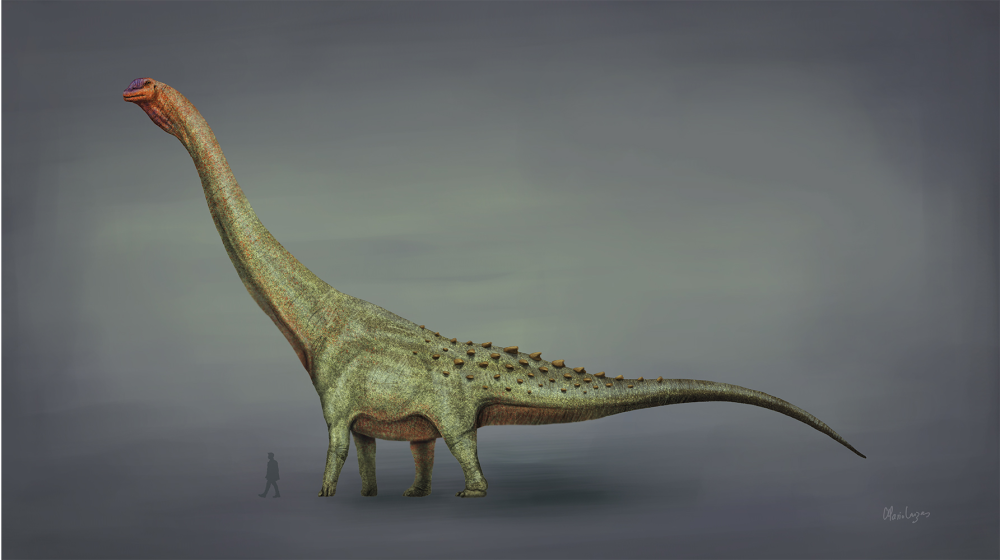You’re lucky enough to be alive at the same time as the biggest animal to have ever inhabited the planet. At 33.5 meters (110 feet) long and weighing more than 150,000 kilograms (330,000 pounds), the blue whale takes the crown overall. If we look to land animals, you’re dealing with dinosaurs. So, given how humongous they were, it got us wondering: How long did dinosaurs live?
The rest of this article is behind a paywall. Please sign in or subscribe to access the full content.
What we thought we knew about dinosaur lifespans has changed dramatically over the last 20 years as we’ve gained a better understanding of the rate at which they grew at. We’ve realized in that time that their life expectancies were surprisingly short compared to other massive animals alive today, like turtles who can live to be over 100.
This is particularly surprising in the context of the largest animal ever to walk the Earth: Patagotitan mayorum. These prehistoric giants stretched 37 meters (121 feet) in length and weighed an estimated 70 tons, or 70,000 kilograms (154,323 pounds) – the equivalent of 10 African elephants, which are the largest terrestrial species alive today. However, even the biggest dinosaurs weren’t living as long as most humans do today.

Patagotitan VS a human, just in case you fancied being made to feel small by a surprisingly youthful dinosaur.
How long did dinosaurs live?
“Very large sauropod dinosaurs probably took about 30 to 35 years to reach maximum size, and we assume if they did that maybe they would have lived a bit longer beyond that period so maybe 30, 40, or 50 years for the really big dinosaurs,” Professor Paul Barrett, Merit Researcher at the London Natural History Museum, told IFLScience. “Smaller dinosaurs – things like ornithopod dinosaurs, such as Dryosaurus or Hypsilophodon – look like they reached their full body size at around four to five years. After three or four years, unless they were really lucky, they were probably dying.”
Probably even the really biggest dinosaurs rarely broke 50
Prof Paul Barrett
A pivotal discovery in our understanding of dinosaur lifespans was that a lot of these animals actually grew fast (to borrow Barrett’s words: “Like really, really fast”). Unfortunately, growing so fast limits your life expectancy.
“So, probably even the really biggest dinosaurs rarely broke 50,” said Barrett. “It’s a big surprise to people that work on them because you would assume that such a big animal would be around for a long time because huge animals like blue whales and elephants today have human-like lifespans of 70+ years. But these dinosaurs, which – in the case of the really big sauropod dinosaurs – can be 10 times the size of an elephant probably didn’t live as long.”
What did old dinosaurs die of? (Other than other dinosaurs)
The prehistoric planet was an unforgiving place, and any dinosaur starting to feel past its prime would’ve been an easy target for predators. Were they lucky enough to avoid becoming dinner, there were plenty of other ways for them to shuffle off the mortal coil.
The major causes of death for living animals are generally starvation or dehydration, due to lack of food and water from seasonal droughts
Prof Paul Barrett
“Diseases, bad luck, being struck by lightning, hit by a tree, or getting caught up in a flood,” said Barret, when asked what dinosaurs died of. “But the major causes of death for living animals are generally starvation or dehydration, due to lack of food and water from seasonal droughts. Then, to some extent, diseases, predation, and really old age, just everything wearing out and not being able to chew or digest things anymore.”
So, it’s possible that a dinosaur living in captivity might live a little longer, but that raises another, bigger question: Will we ever get a Jurassic Park?
Source Link: How Long Did Dinosaurs Live? “It's A Big Surprise To People That Work On Them”